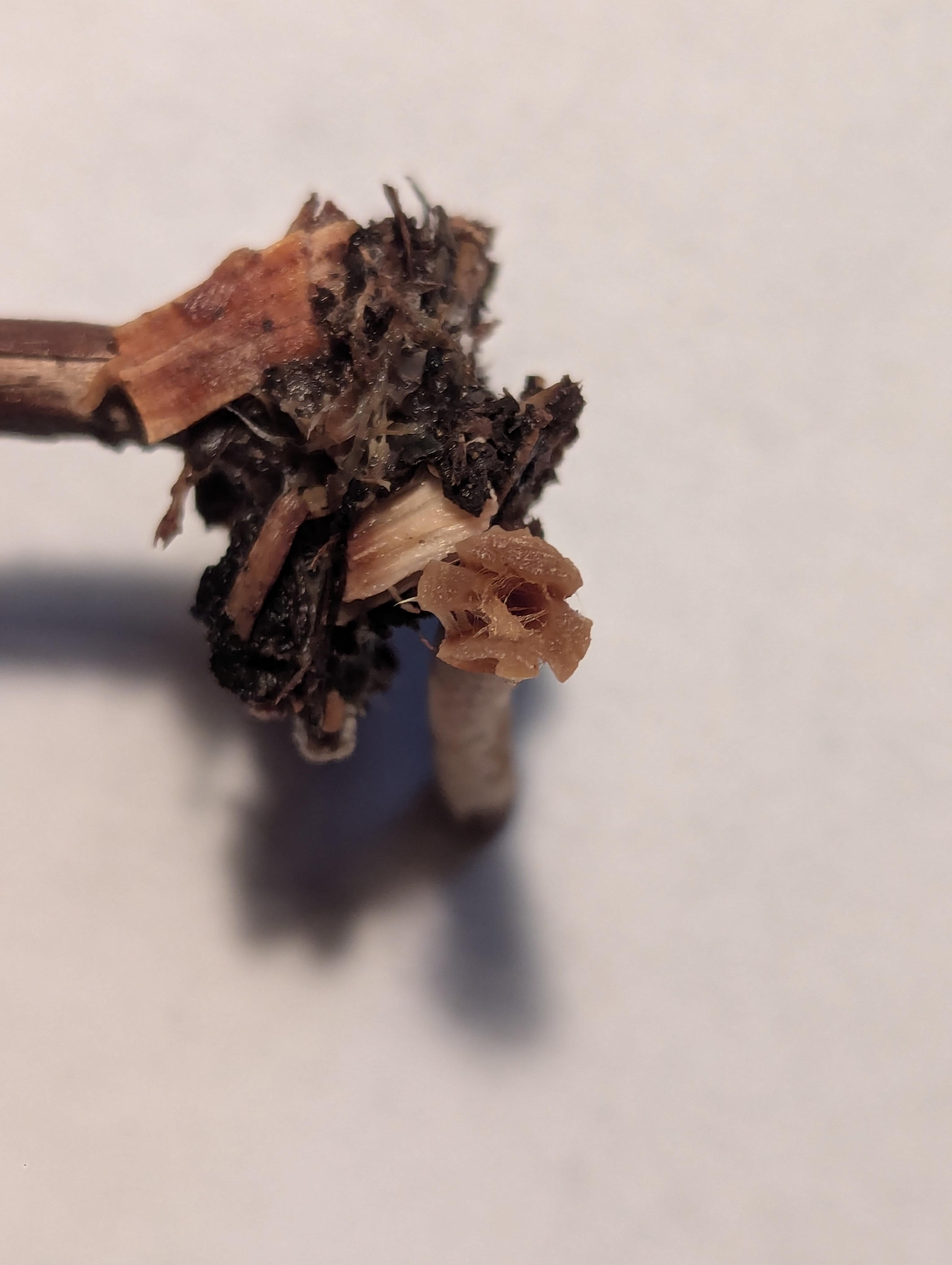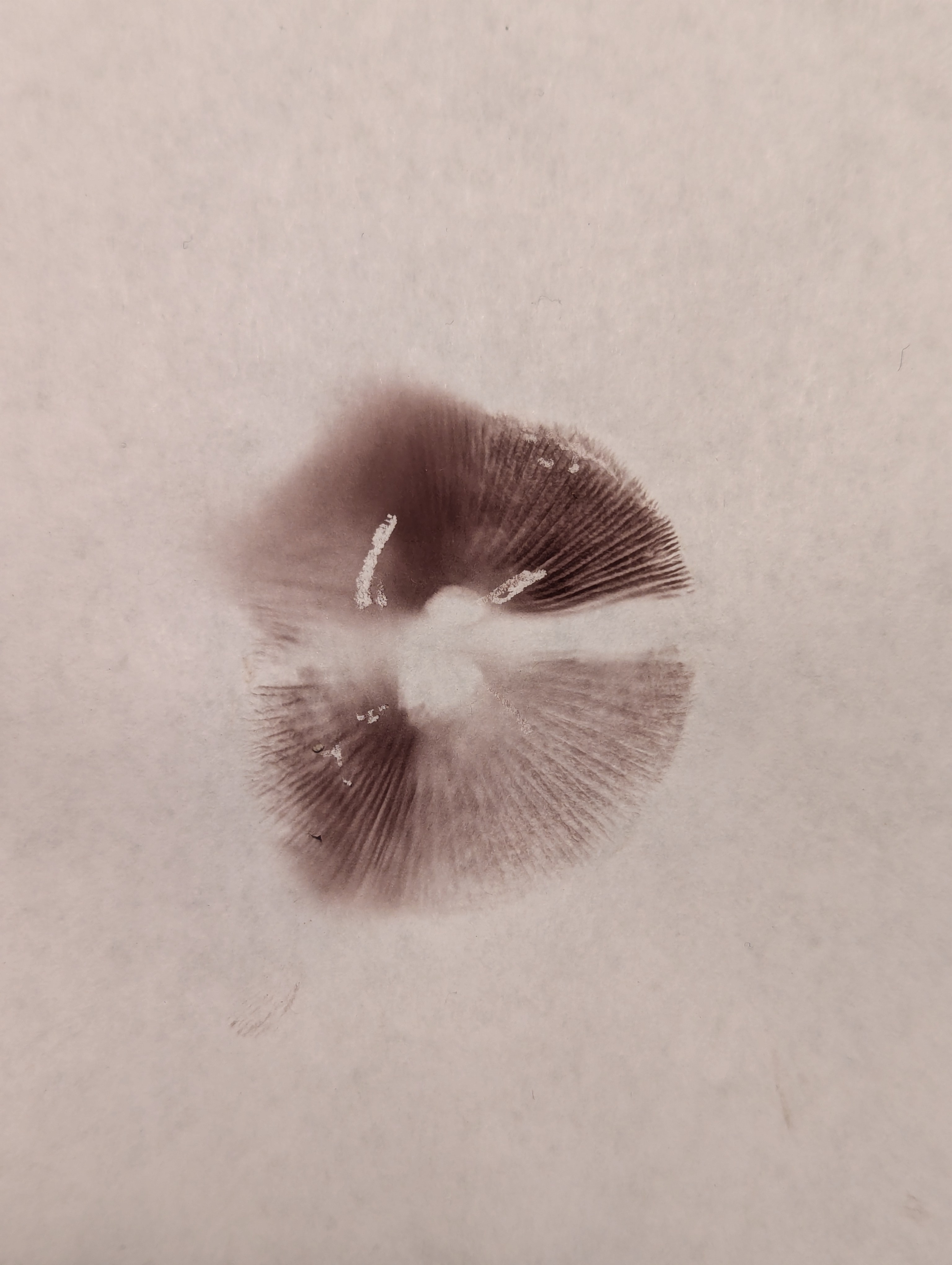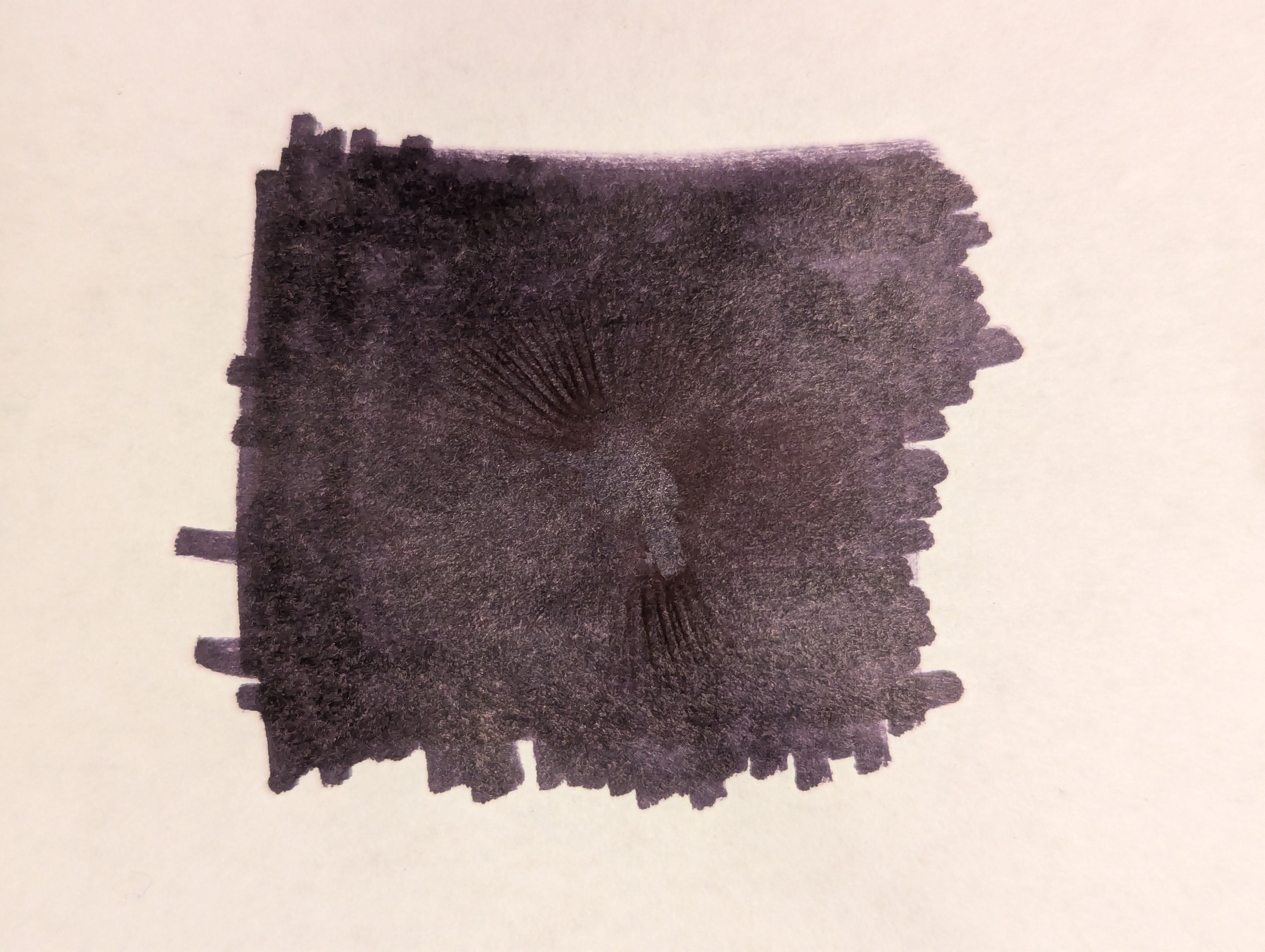View the spoiler for my guess at what I think it might be, but please first come to your own conclusion before looking at mine — I don’t want to bias your guess.
My guess
Psilocybe cyanescens
They were found in mid-november in the Salish Coast region of Cascadia. They were growing out of woodchips composed of a mixture of western hemlock (majority), and western red cedar.
Side view of one full mature specimen:

A group with a sample of the substrate (the cap appears to be umbonate):

A closeup side view, and internal view of the stem (it appears to be hollow):


Cross section of the gills — they appear to be adnate, or sub-decurrent:

Underside of view of the gills:

Spore print (first on white background (the split is due to two halves), second on a black background):


Examples specimens once dried:


Examples of the colony, and the location/substrate in which it was growing:


Cross-posts:
Not a mycologist, but those do look like Psilocybe Cyaanescens / Wavy Caps to me.
One of the defining traits of Pailocybin mushrooms is that they bruise blue where touched / handled / damaged, but that doesn’t seem evident in these pictures.
the spore print is also brown here, but should be purple-ish black if it were Psilocybe spp., also the stipe looks wrong for that ID - I would say definitely not Psilocybe cyanescens (not just because they’re not bruising blue / purple / black).
I would say definitely not Psilocybe cyanescens
Would you by chance have a guess as to what they might actually be?
it’s what we call in the field call “LBMs”, little brown mushrooms 😆 It’s not worth trying to ID to species, and often isn’t easy to do. There are certain mushrooms I don’t try that for, LBMs and Russulas are often the kinds of mushrooms I don’t bother with.
My suggestion is to find a local mycology group where you can join them on forays and learn how to ID mushrooms.
My suggestion is to find a local mycology group where you can join them on forays and learn how to ID mushrooms.
Is a forum specifically about mushrooms (ie this one) not sufficient to this end? 😜
absolutely not, lol
How come? I would think that an online forum has a much larger potential surface area for accessing collective knowledge.
Mushroom species have different geographic ranges and it’s hard to identify species from a photo unless you’ve seen it in real life so global groups tend to be less useful than local groups.
Also the accessibility of the fediverise as a platform is an issue. The best place to go for PNW mushroom identification is a Facebook group as much as I hate to say it.
I could understand it seems that way when you don’t have any experience with identifying mushrooms, but there are so many reasons to meet in person and go on forays with people more experienced than you. When you follow taxonomic keys it’s not uncommon that you need to evaluate mushrooms based on their taste (bitterness, piquancy, etc.), their smell, and other qualities that are impossible or difficult to describe objectively or photograph.
As others have pointed out, mushrooms are heavily local and the internet will have people who will easily misidentify a species because it looks just like something they are familiar with in a different region (this is the cause of many deaths, east Asian immigrants coming to the U.S. misidentify deadly poisonous mushrooms as a common edible from back home when they come here).
Furthermore, internet forums are not well suited to the kind of pedagogy and learning that getting experience with mushroom identification requires. You need continued experience watching others identify mushrooms successfully and to learn over the course of their identifications how to identify mushrooms yourself. There is a kind of learning from exposure that happens that way which isn’t replicated easily on a forum.
it’s what we call in the field call “LBMs”, little brown mushrooms 😆 It’s not worth trying to ID to species, and often isn’t easy to do.
Out of curiosity, what methods would be used to definitively identify these sorts of mushroom that make it not easy?
in the case of Russulas for example you would essentially need a strong enough microscope to inspect and measure spores, and even then it might not be enough and you would have to sequence the DNA to identify to species. Russulas also have specie-complexes so looking too closely results in having to shuffle and re-define the taxonomy.
When there’s so little functional difference between the species, groups become more useful for identification.
I don’t blame you if you don’t want to chew on raw Russula long enough to tell whether or not it’s eventually spicy though.
In addition to the reasons for given for Russula in the other comment: LBMs tend to be deadly poisonous and aren’t that interesting to look at so nobody cares about figuring out which one is which except professional researchers.
Russula at least have colorful caps, choice-edible species, and are fun to huck at trees.
Russula […] are fun to huck at trees.
Interestingly specific comment 😆
They have a stiff chalky texture that’s easy to recognize if you know it but throwing them at a tree to see if they shatter like a snowball is a great way for beginners to confirm that they’ve found a Russula.



